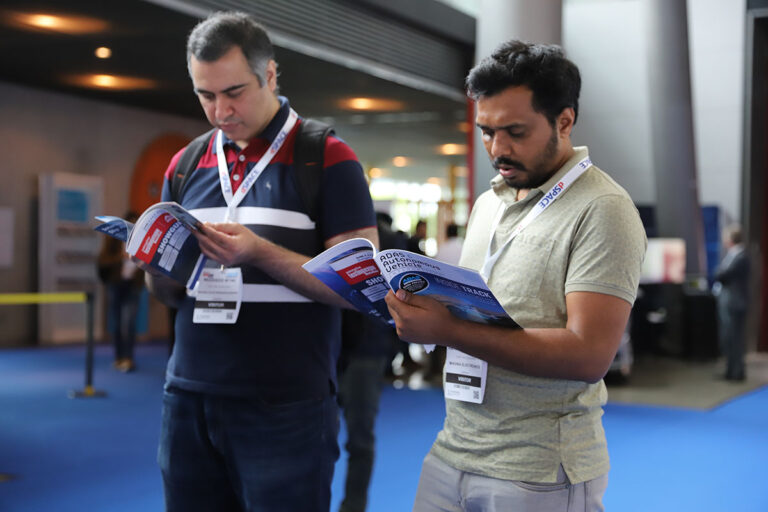ADAS & Autonomous Vehicle Technology Expo Europe 2024 was held last week on June 4-6 at the Stuttgart Messe in Germany, where it reaffirmed its status as the industry’s leading showcase event for Europe.
Over the course of three days, the expo featured more than 150 exhibitors, hosted over 80 conference speakers and attracted thousands of visitors from the European vehicle safety, validation and autonomous driving sectors.
Among the notable exhibitors were dSPACE, AVL, Mobileye, Ansys and IPG Automotive, each presenting their latest advances to customers, visitors and peers.
Feedback from ADAS & Autonomous Vehicle Technology Expo Europe attendees, exhibitors and speakers was notably positive, with many previous visitors making a return to the exhibition.
One of those familiar faces was Gerald Hochmann, AVL’s principal for global business development of ADAS/AD testing solutions, who outlined the company’s presence at the show: “We take the opportunity to attend this trade show to convey all our latest updates by our experts on testing solutions and engineering services assisting the development of ADAS and AD for future mobility.
“The Stuttgart exhibition and conference is the perfect place and time to do this for all our European clients, as well as for customers visiting from all over the world.”
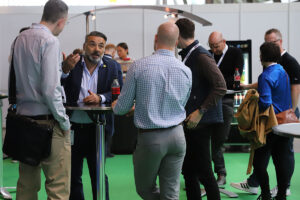
Another returning exhibitor, b-plus strategic program manager Adrian Bertl, explained the company’s attendance at the show: “We are attending the show because it focuses on the market for AD/ADAS technologies, which is a key area for our hardware and software applications. We have developed and tested robust solutions specifically for the automotive market. The show also provides excellent opportunities for partner networking, making it an ideal platform to exhibit our technology.”
Speaking at the conference was Carlo van Driesten, systems architect for virtual test and validation, BMW Group, who said, “I came to ADAS & Autonomous Vehicle Technology Expo Europe because I can meet with other experts across the ADAS ecosystem.”
Conference speaker Dalia Broggi, who is project manager for vehicle safety for traditional and innovative systems such as ADAS at the European Commission JRC, has attended many UKi Media & Events exhibitions. “Speaking at ADAS & Autonomous Vehicle Technology Expo helps in spreading our market surveillance work as it did in another context, such as the Tire Technology Expo,” she said.
Exhibition highlights
Exhibitors specializing in ADAS and automated driving were present across three halls at the Stuttgart Messe, which hosted the adjoining Automotive Testing Expo Europe as well as ADAS & Autonomous Vehicle Technology Expo Europe.
The event featured established industry leaders such as Mobileye, Claytex, WMG and Kognic. Alongside these heavyweights, an array of smaller, highly specialized companies also showcased their latest developments.
Visitors had the opportunity to engage with key industry players and discover new contacts and potential solutions from an exciting mix of startups, many of which were making their debut at the event.
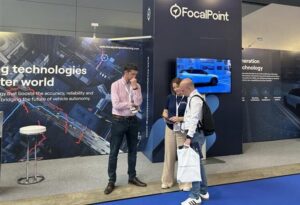 First-time exhibitor FocalPoint Positioning demonstrated the benefits of its next-generation global navigation satellite system (GNSS) technology, S-GNSS Auto, which can improve ADAS and extend the capabilities of existing networks. “Offering a breakthrough in innovation for the industry, our software solution makes GNSS sensors 10 times more reliable and suitable for ADAS,” said Manuel Del Castillo, VP of business development at FocalPoint. “It’s great to be part of the wider automotive ecosystem and discuss the importance of reliable GNSS for the sector.”
First-time exhibitor FocalPoint Positioning demonstrated the benefits of its next-generation global navigation satellite system (GNSS) technology, S-GNSS Auto, which can improve ADAS and extend the capabilities of existing networks. “Offering a breakthrough in innovation for the industry, our software solution makes GNSS sensors 10 times more reliable and suitable for ADAS,” said Manuel Del Castillo, VP of business development at FocalPoint. “It’s great to be part of the wider automotive ecosystem and discuss the importance of reliable GNSS for the sector.”
Most new vehicles include an onboard GNSS that provides functions including route guidance, map localization and ADAS. Maximizing the performance of this existing GNSS, S-GNSS Auto is powered by FocalPoint’s Supercorrelation technology and works by enhancing the GNSS receiver’s measurement engine. As a software upgrade to an existing GNSS chip set, it aims to improve vehicle position accuracy and integrity while enhancing cybersecurity.
Another exciting startup that made its debut in Stuttgart was BrightDrive, a subsidiary of Brightskies specializing in autonomous driving technology. The company announced a collaboration with Intempora, a dSPACE company and provider of software solutions for automotive embedded systems.
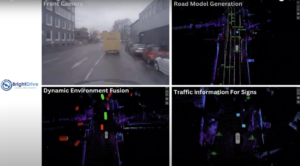
Nicolas du Lac, CEO/CTO at Intempora, said, “By combining BrightDrive’s BrightAnnotate algorithms with RTMaps, we are opening up opportunities for developers and validation engineers to efficiently automatically annotate their automotive sensor data. This new technological partnership, globally extended with dSPACE, will strengthen the automotive industry by providing key enabler tools that will drive our users forward.”
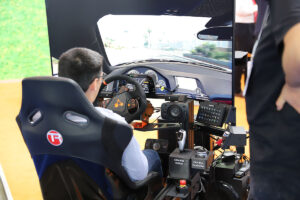 A wide range of simulation companies were also in Stuttgart, such as BeamNG, which showcased its hardware-in-the-loop (HiL) use case (CANbus) and its interoperability solutions (Simulink, ROS 1, ROS 2, MQTT protocol). The software is equipped with sensor models, scenario generation tools, data acquisition options, AI driving modes and user-friendly APIs. Among the tools for realistic environment simulation is the roads architect tool for road generation, which is compatible with OpenDrive.
A wide range of simulation companies were also in Stuttgart, such as BeamNG, which showcased its hardware-in-the-loop (HiL) use case (CANbus) and its interoperability solutions (Simulink, ROS 1, ROS 2, MQTT protocol). The software is equipped with sensor models, scenario generation tools, data acquisition options, AI driving modes and user-friendly APIs. Among the tools for realistic environment simulation is the roads architect tool for road generation, which is compatible with OpenDrive.
A simulation company that caught the eye of many visitors was dSPACE. The company focused on the electric architecture of SDVs, which consist of at least one high-performance computer (HPC), multiple zonal controllers and a vehicle operating system (middleware) separating their application layer from the hardware layer.
On display was the company’s VEOS software-in-the-loop (SIL) simulation platform, which enables the integration of heterogeneous systems under test (SUT), models and tools into a single simulation environment. This PC-based SIL platform leverages high-performance computing (HPC) to simulate complex systems, including zonal and edge controllers, in the cloud.
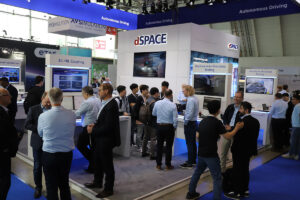
Another highlight of the dSPACE booth was the company’s test benches designed for safe and reproducible testing. They facilitate vehicle-in-the-loop testing with over-the-air simulation of radar and camera sensors, eliminating the need for physical manipulation of the vehicle. Critical situations can be simulated repeatedly to ensure that all functions perform as required.
The company said that the test benches support a wide range of applications from research and development (R&D) to end-of-line testing (EOL) and periodic technical inspections (PTI), as well as testing of ADAS/AD functions and ensuring the reliability and safety of automotive systems.
Elsewhere, senior manager – product management Emmanuel Follin and senior product sales manager Gilles Gallee at Ansys explained to ADAS & Autonomous Vehicle International how the company’s expertise in simulation and modeling could benefit ADAS and AV systems developers.
The Ansys tech on display enabled the execution of millions of scenarios much earlier in the development process, helping reduce the time-to-market.
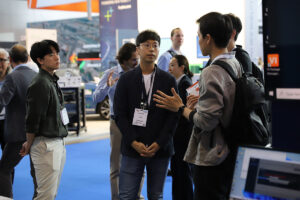
AVL shared its engineering services designed to validate ADAS and AD functions in next-generation vehicles.
AVL solutions on display included virtual testing solutions for electromagnetic compatibility (EMC), radar and steering. A particular highlight was the AVL DrivingCube, a versatile tool designed to enable safe and reproducible testing at the system and component levels. It covers signal-based fault injection, EMC testing and scenario-based testing of complex traffic situations.
Gerald Hochmann, the company’s principal for global business development of ADAS/AD testing solutions, said, “This solution integrates simulation with the ADAS electronic control unit (ECU) in a hardware-in-the-loop (HIL) setup, alongside a ready-to-drive vehicle on a testbed. The tooling provides scenario creation and management, testing workflow and detailed data analysis. With this, traceability throughout the ADAS/AD validation process is given. ADAS/AD testing gets faster, safer and more flexible.”
The company also discussed how it uses virtual homologation and scenario-based testing in projects beyond L2 and L3 automation.
A key trend seen at the expo is that the mobility industry is undergoing rapid transformation, with safety features becoming standard and self-driving systems increasingly being deployed globally.
Mobileye has been collaborating with auto makers and mobility providers to deliver a wide range of systems from basic ADAS to full self-driving capabilities. At the expo, the company presented two key solutions: Mobileye SuperVision and Mobileye Drive.
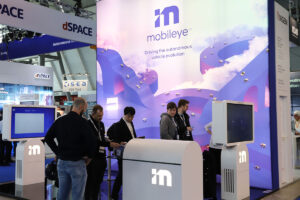
Barak Beitner, Mobileye’s business development and strategy manager, said, “The ADAS & AV Tech Expo offers us a unique opportunity to show our solution portfolio, ranging from base ADAS all the way to self-driving capabilities.
“The event also allows us to connect with experts in the automotive industry and discuss how our systems can bring more safety and comfort to various mobility offerings. Several OEM and Mobility as a Service partners such as Volkswagen and Holo are among the visitors and experts at the show, allowing us to showcase our expertise on the expert stages as well as in the exhibition space where we are present with our own booth.”
Mobileye also showcased its Driving Experience Platform (DXP). First introduced in January 2024, it is designed to enable vehicle manufacturers to fine-tune certain driving parameters, within a safety envelope, customizing the driving experience for their customers. The company said this new approach breaks away from the idea of a one-size-fits-all model for AVs and advanced ADAS.
“Working closely with OEMs, we have understood their need for a solution that brings premium safety and comfort driving features to their vehicles without requiring excessive resources, while also maintaining their unique brand identity,” said Beitner.
Beitner also delivered a keynote presentation, ‘Bridging scale and differentiation in autonomous driving’, at the ADAS & Autonomous Vehicle Technology Conference on the final day.
You can read more news from the show, including some exclusive exhibitor video interviews, here.
Conference insights
Alongside the exhibition, the dedicated three-day conference featured over 80 expert speakers, with OEMs, tech companies, suppliers and regulators discussing the latest issues, strategies and innovations shaping the development and deployment of ADAS and AV technologies. Hot topics included standards and regulations, and advances in software, AI, architecture and data management.

Day 1 of the conference focused on issues, strategies and innovations. Dr Andreas Richter, engineering program manager for operational design domain for self-driving vehicles at VW, gave a presentation on how to implement a technically precise but still human- and machine-readable operational design domain for real-world operation. Then Ali Nouri, senior system safety engineer in autonomous driving at Volvo, explored the challenges and solutions related to leashing AI in autonomous vehicle safety assurance applications.
Dalia Broggi from the European Commission provided a regulatory compliance perspective, discussing whether ADAS functions are ready for the real world. Dalia compared type approval tests with real-world assessments by the Joint Research Centre, revealing ADAS/AV limitations. “Market surveillance should be an additional resource to deal with challenges arising, to ensure the safety of vehicles equipped with software-based systems,” she told ADAS & Autonomous Vehicle International after her presentation.
The afternoon discussions in Room 1 covered standards, regulations, homologation and collaboration, including a presentation from Bosch on recommendations for a common understanding of ISO 26262.
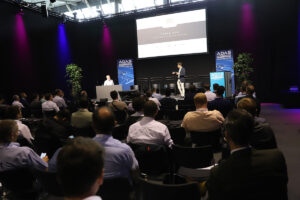
The first day closed with a panel discussion on building an integrated toolchain for safe and confident deployment of autonomous vehicle and ADAS technologies, with contributions from VW, Volvo, Kus, ASAM, Automotive Solution Center for Simulation and IRT SystemX. Phil Durston, technical manager for VW vehicle development: proving grounds and AD strategy, said, “It’s great to be back at the ADAS conference, in the heart of the expo. I’m looking forward to the inspirational, informative and innovative days ahead.”
On Day 2 of the conference discussions focused on demonstrating safety and validating and homologating automated driving systems for the deployment of Level 2+ technologies and beyond, with Applus Idiada, SIA and AVL contributing their insights.
In the ‘Learning from real-world and proving ground test and deployment, and integrated virtual testing’ session, Dr Sebastian Siegl, function verification and validation strategy manager for automated driving functions at Audi, discussed evolving proving grounds for the development and validation of AD in different ODDs.
Dr Roman Krzemien, head of safety and cybersecurity, mobility, and Andreas Wohlfarth, head of safety (SOTIF) and cybersecurity, mobility, at ZF, presented a mobility safety case study focused on operational safety.
In Room 2, presentations explored scenario-based testing and simulation, and began with Foretellix‘s chief regulatory affairs officer, Gil Amid, whose presentation was titled ‘Safety-driven validation: when ODD meets OpenSCENARIO 2.0’.
BMW Group‘s systems architect for virtual test and validation, Carlo van Driesten, spoke on ‘Enabling virtual test and validation – self-sovereign identity via OIDC to enable decentralized open data markets’.

In an interview with ADAS & Autonomous Vehicle International following his presentation, van Driesten said, “You do the standardization to have a common language, then we can describe something like a digital map and build a process to define the quality, with a credible modeling process. Currently we judge the quality by pricing it in the same way you would price a pencil: via its classifications or product description. The intention is to describe simulation assets to make them comparable, then we can use an innovation like an NFT to create a digital twin or representation of it to trade the policy, which means, for example, the right to download. For this policy trade, it’s described by a triple: 1) the digital identity; 2) the representation of the asset; 3) the policy. The moment you can describe all those things and execute it, you can create digital markets for digital data.
“This all relies on different pillars, namely: open source to be able to publish, make it usable and visible; standardization, to interface with others in a compliant legal framework, such as ASAM; acknowledging that we’re in a competitive space – cooperating ‘coopetition’; and finally, looking to other innovations in other domains, such as the digital art scene, and adapting them for our use case and checking against our requirements.”
A highlight of Day 2 was the panel discussion which explored using and integrating scenarios and ODDs to best achieve state-of-the-art safety. Moderated by Marc Pajon, a consultant at Taktech, the panel included Vincent Abadie, senior fellow ADAS and autonomous driving at Stellantis; Dr Andreas Richter, engineering program manager – operational design domains at Volkswagen Commercial Vehicles; Carlo van Driesten, systems architect for virtual test and validation at BMW Group; and Hakim Mohellebi, an expert in engineering simulation functional architecture at Renault.
Dates for your calendar
After another successful European show, those interested in the latest developments and innovations in ADAS and automated driving should make a note of the dates for the US show – ADAS & Autonomous Vehicle Technology Expo California will take place at the San Jose McEnery Convention Center on August 28 & 29, 2024. The European event will return to Stuttgart next summer: the dates for your diary are May 20, 21 & 22, 2025.


